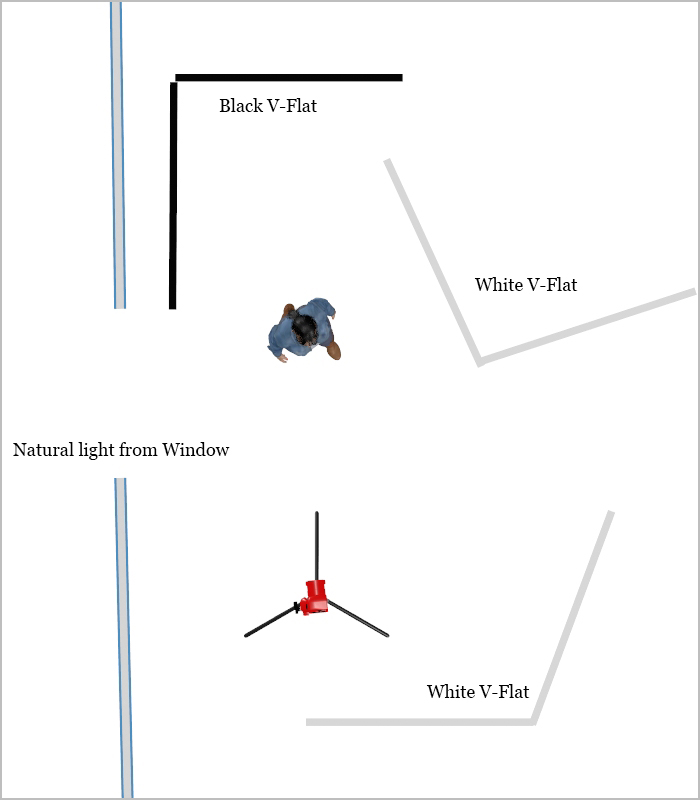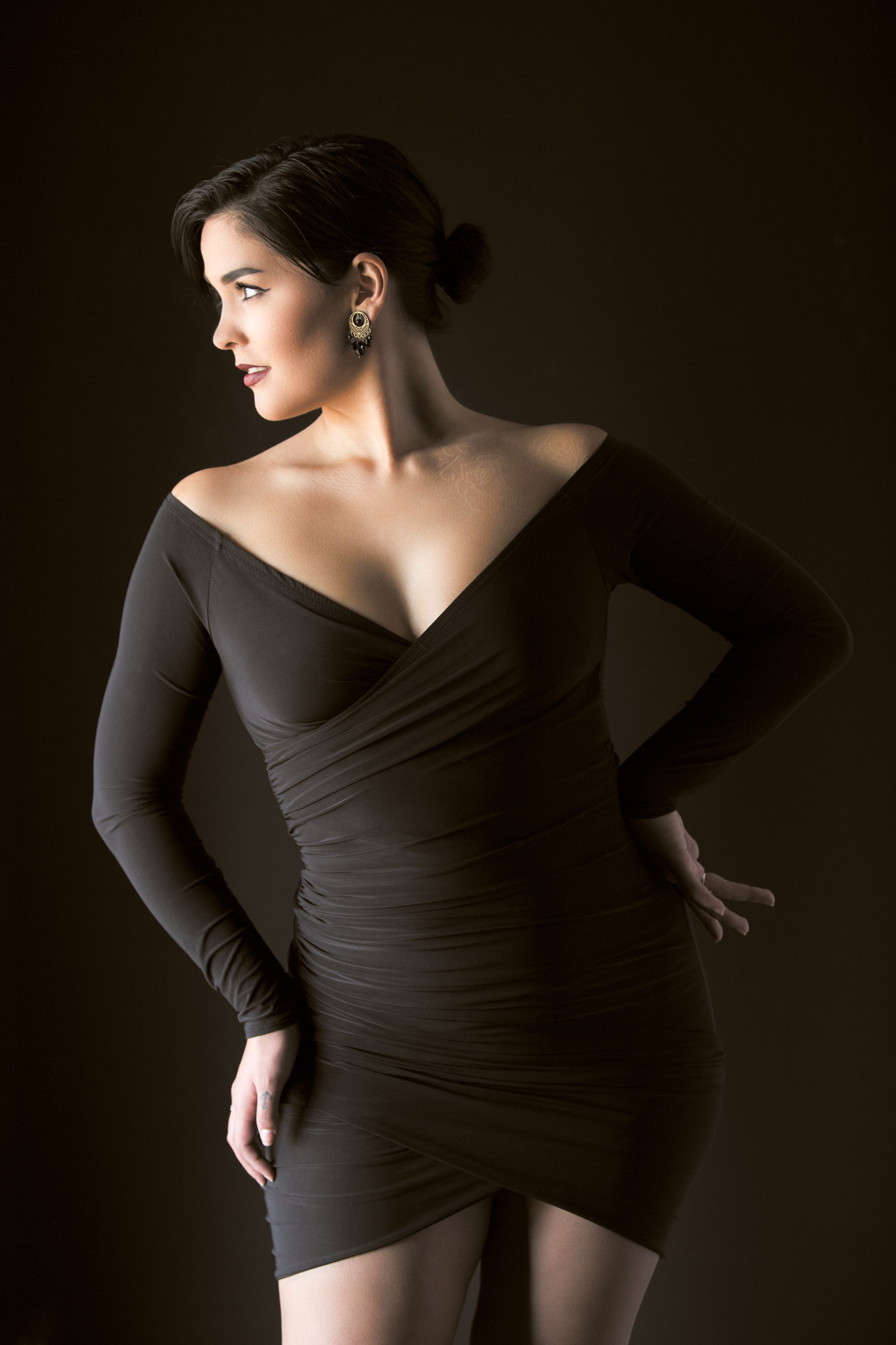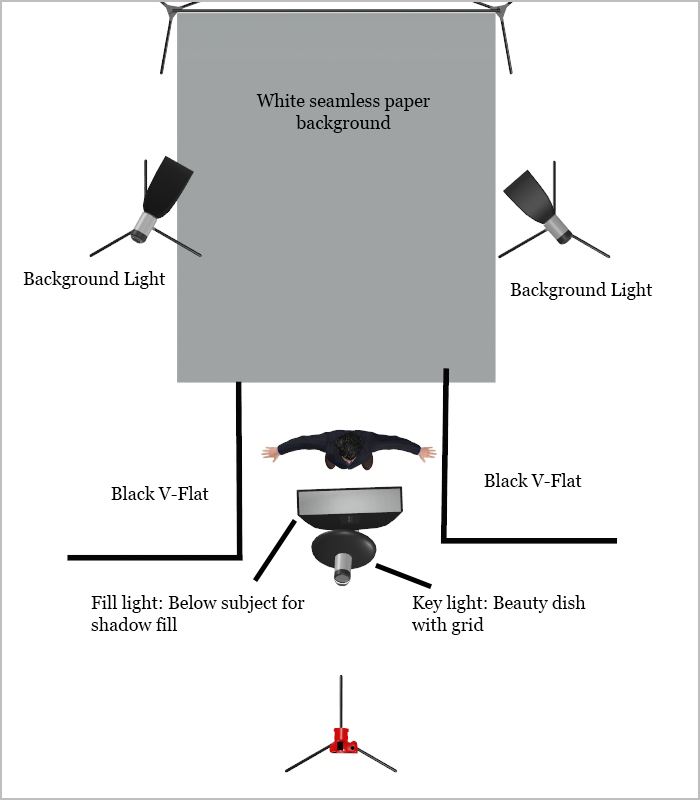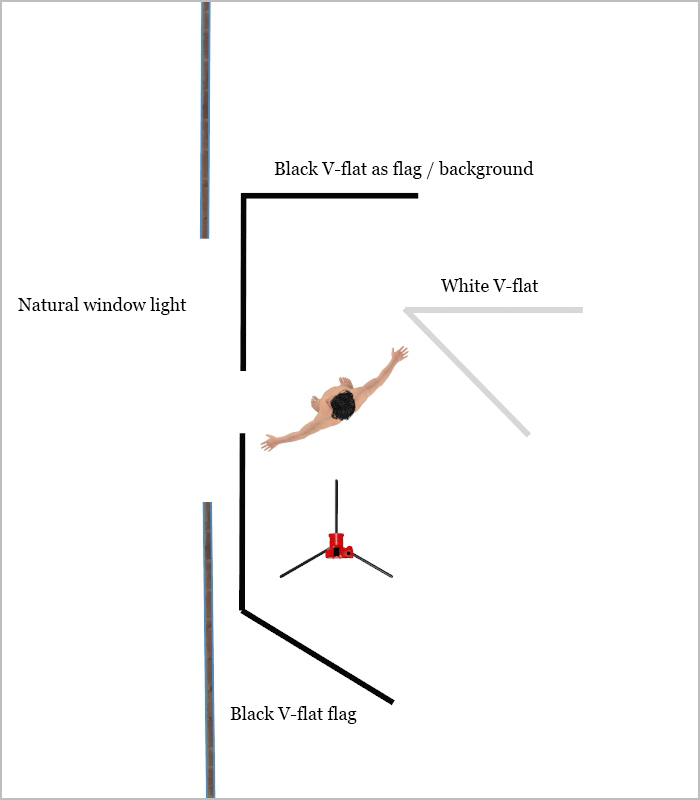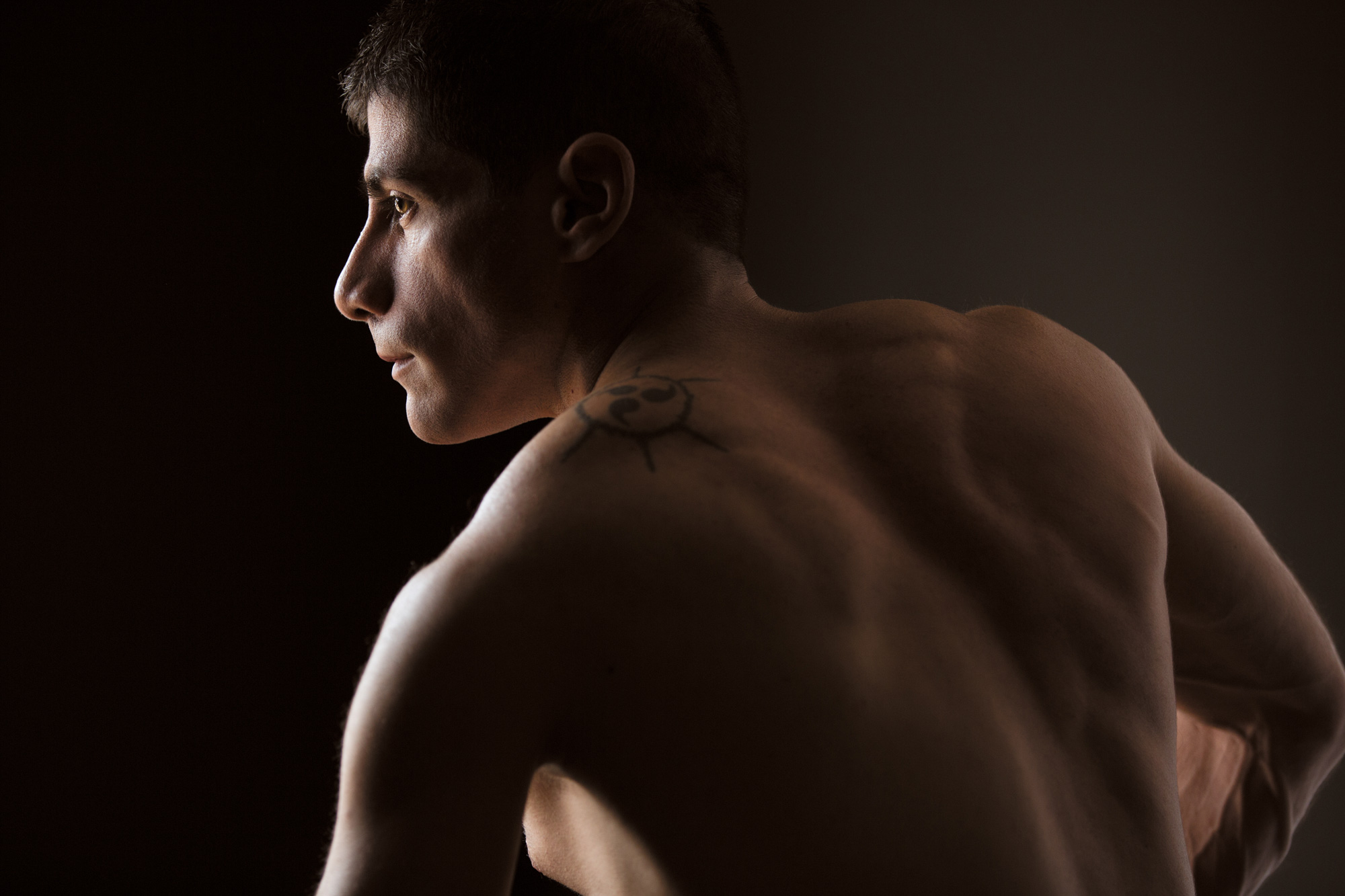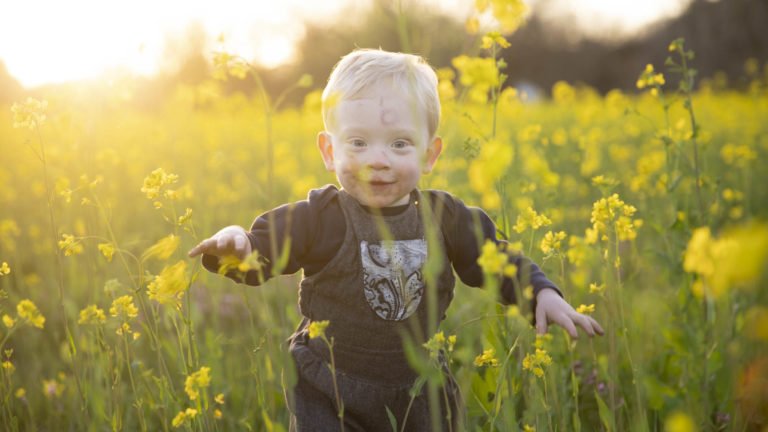Mastering the art of portrait photography often hinges on how well you control lighting. V-flats, a simple yet transformative tool, can drastically influence this aspect. Using V-flats for portraits enables photographers to shape light and shadows, creating images that truly stand out. This guide delves into various techniques for employing these versatile boards, enhancing both the aesthetic and technical quality of your portraits.
This post may contain affiliate links, meaning I get a commission if you decide to make a purchase through my links at no cost to you. Please read my disclosure for more info.
What Are V-Flats?
V-flats are an essential tool for controlling light, especially when crafting portraits. Typically, they consist of two 4′ x 8′ foam core boards (black on one side and white on the other) and are taped together with gaffers tape. This tape acts like a hinge, allowing them to stand upright by themselves like an open book.
The reason V-flats are white on one side and black on the other is to provide versatility in controlling light and shadows. This simple, yet effective design allows you to add fill to shadows, make shadows deeper or even flag or redirect light from strobes or ambient light.
The easiest way to acquire V-flats is to order the foldable ones online. If you’re on a budget, you can build a DIY set by sourcing foam core boards from a local film supplier or polystyrene from the hardware store. Alternatively you can also check out these** V-Flat alternatives** (insert hyperlink)
Check Price For V-Flats

Ways to Use V-flats for Portraits
V-flats are a versatile tools in portrait photography, offering multiple ways to control and manipulate light. Their dual-colored sides – one white, one black – allow for creative control over shadows and highlights, while their large size makes them perfect for redirecting light, serving as backdrops, or even acting as flags. Let’s dive into the main ways to use V-flats to create stunning portraits.
Bounce Light With the White Side: How to Use V-Flats For Portraits
The white side of a V-flat is perfect for bouncing light, creating what photographers call a fill light (lifting shadows). In my experience, this technique is incredibly useful for softening harsh shadows in portraits, ensuring a more flattering and evenly lit subject.
In the following photos, I exclusively used V-flats and natural light to achieve the desired aesthetic. For the backdrop, I chose a black V-flat to create a deep, uniform background for the portrait. To the right and slightly behind my subject, another V-flat was strategically positioned to bounce back the natural light, acting as a rim light. This rim light created a subtle outline of light on her, separating her from the background and adding a three-dimensional quality to the image.
In front of her, another V-flat was placed to reflect natural light onto the front of her face and body. This setup was critical in lifting the shadows and softening the overall look. The combination of these V-flats allowed for a play of light and shadow that highlighted her features while maintaining a balanced, natural exposure
Create Negative Fill Contrast with the Black Side: How to Use V-Flats For Portraits
Conversely, the black side serves as a negative fill, absorbing light to craft deeper shadows and enhance contrast. This approach is particularly effective in adding drama or mood to your portraits, especially if you have too much ambient light at your location. It’s also invaluable for sculpting facial features or emphasizing texture in your subject.
For the following portrait, I used two black V-flats on either side of my subject to accentuate the light falloff from my key light. By creating a tunnel on either side of him, I was able to create high contrast shadows even on a bright white background. This technique helped create extra depth, enhancing the edgy aesthetic of this professional portrait.
Use as a Flag for Light Control: How to Use V-Flats For Portraits
V-flats also act as versatile flags, adeptly blocking or controlling light from strobes or ambient sources. This function proves crucial when needing to prevent light spill or to guide light precisely in portrait settings. The use of V-flats for this purpose not only enhances the subject’s lighting but also aids in maintaining consistent light quality throughout the shoot.
For the following shot, I used the natural light from a window. However, the window was too big for the dramatic lighting I wanted for the portrait, so what I did was flag the window off with two black V-flats to create a strip of light similar to a strip box. Then on the opposite side of my subject, I placed a white V-flat to bounce a subtle rim light onto his back to accentuate his muscles.
Double as a Background: How to Use V-Flats For Portraits
V-flats can double as simple yet effective backgrounds for portraits. Whether I need a pristine white or a deep black backdrop, the V-flats offer a quick solution so I don’t have to set up a seamless paper. This quick set up is a handy way to quickly create a variety of looks, especially in tight spaces, and also provides a clean, uncluttered backdrop that keeps the focus squarely on your subject.


DIY Foam Core V-Flats for Portraits
Creating your own V-flats using 3/16″ black and white foam core from a film supply store can be a cheaper alternative to buying pre-made V-flats online. That said, if you want to make your own V-flats, it’s really hard to find the large 4’x8′ panels online that someone will ship to you. You can find smaller ones online like in the following video, but be aware that making your own V-flats can be significantly more work then most people realize.
V-flat Alternatives
When considering alternatives to traditional V-flats for portraits, it’s essential to weigh the pros and cons of each option. These alternatives can range from more durable and professional setups to more affordable DIY solutions, depending on your specific needs and budget. Whether you’re looking for easier tools to transport, wider backdrops, or simply a more cost-effective method, there’s a solution out there for every photographer.
1. Collapsible Backgrounds
Collapsible backgrounds like the following can also be used similarly to a V-flat:
- B&H: Impact collapsible background
- B&H: Angler collapsible background
- B&H: Manfrotto collapsible background
Using any of these backgrounds with a C-stand (B&H) and reflector holder (B&H) will make things much easier for you. Although this set-up might be a higher initial investment, I find these are easier to transport and more durable than V-flats. If you’re shooting from your own studio, and you have the space, I’d forgo these collapsible backgrounds in favor of V-flats because they’re easier to adjust during photoshoots.
2. Seamless Paper Options
Using black or white seamless paper (B&H) mounted on C-stands (B&H) with a background holder (B&H) can be an excellent choice if you need to control the light for a large group portrait. The main advantage of seamless paper is that you can make them very wide when compared to V-flats. However, they’re slower to set up and really hard to maneuver around. I’d only do this if I needed to control the light in a large area for an editorial grade group portrait.
3. Polystyrene DIY V-Flats
Lastly, utilizing polystyrene (Lowe’s) from hardware stores is a practical and easily accessible option in place of foam core. These materials are great for crafting V-flats, especially in areas where specialized photography suppliers aren’t readily available. The trade-off is in their bulkier size and the extra effort required to paint one side black and the other white, which might be a consideration if you need a more turn key, ready to use option.
Conclusion
In conclusion, V-flats are a vital tool in portrait photography, offering dynamic control over lighting to enhance the quality of images. Their design, featuring black and white sides on foam core boards, allows for creative manipulation of light and shadows. Photographers can use these versatile panels in numerous ways: as light bouncers, negative fill for contrast, flags for directing light, and even as convenient backgrounds. Moreover, V-flats provide solutions for various photographic challenges, adaptable to both professional and budget-friendly setups. Whether purchasing ready-made V-flats, creating DIY versions, or exploring alternative options like collapsible backgrounds or seamless paper, these tools are essential in creating impactful portraits. Their ability to shape and control light makes V-flats an indispensable asset in the toolkit of any photographer specializing in portraits.


